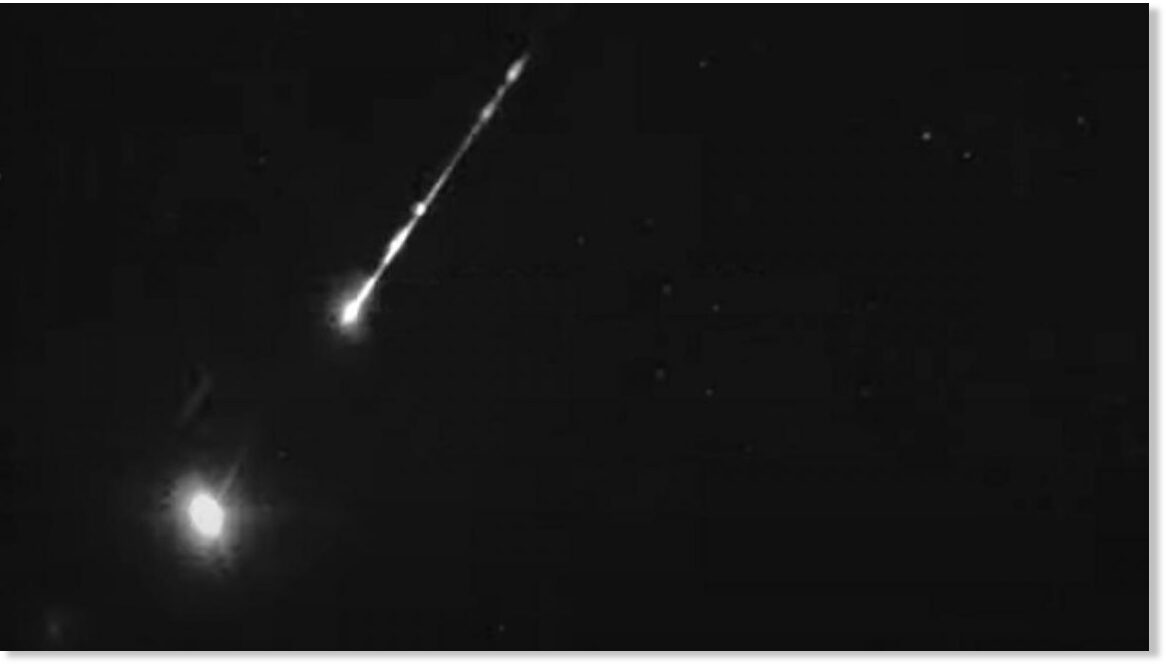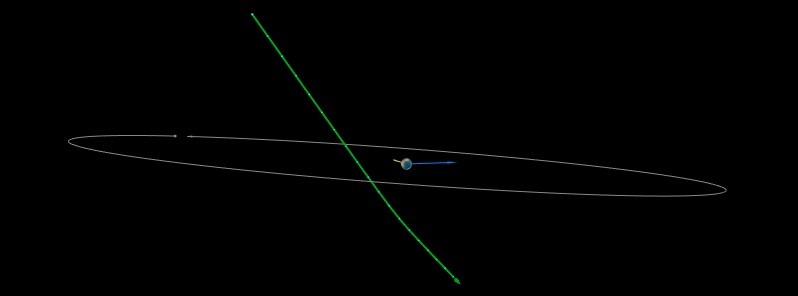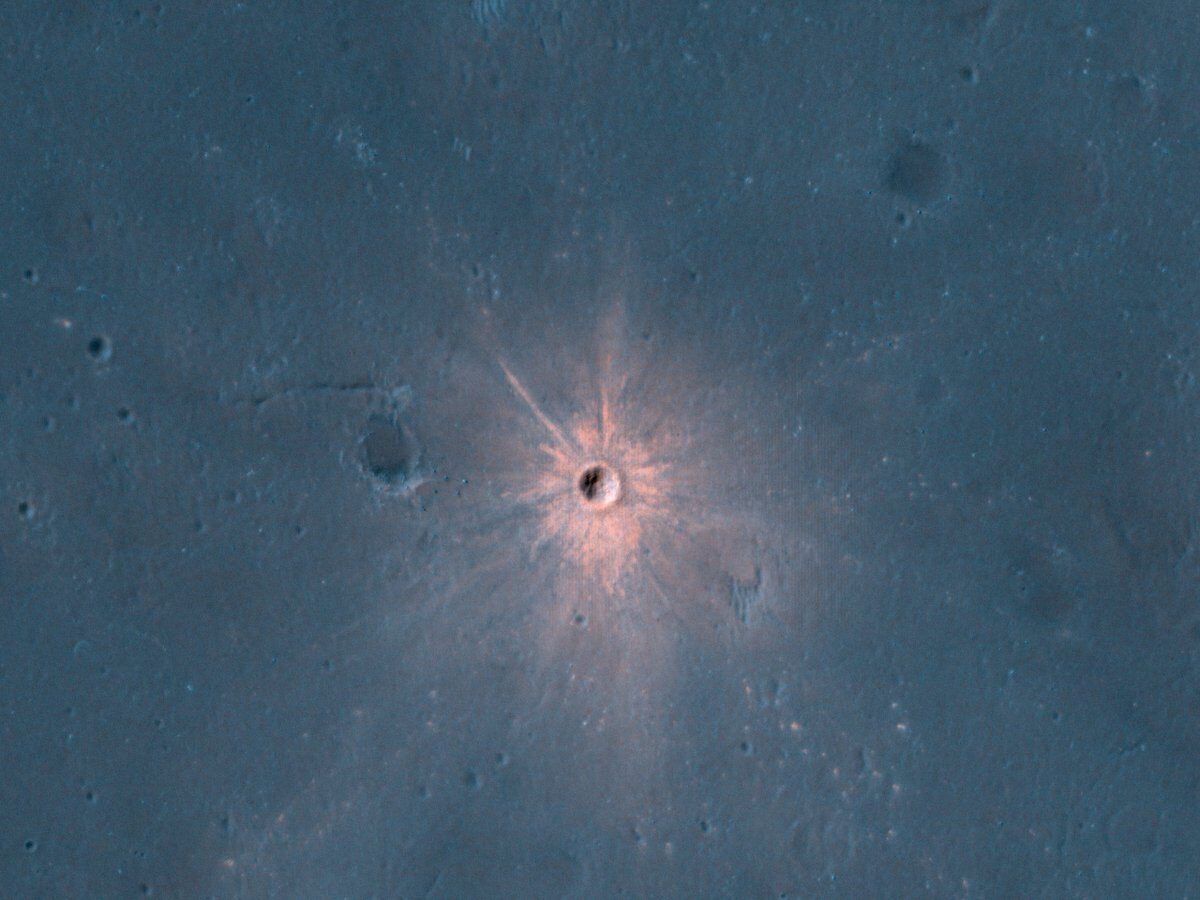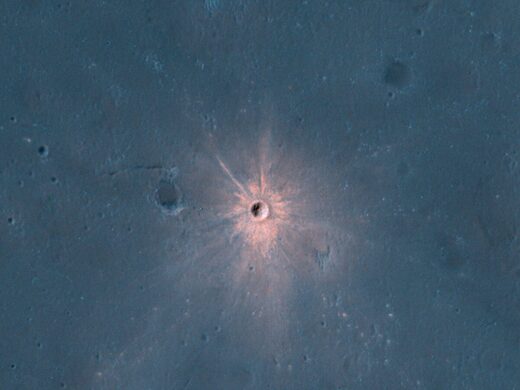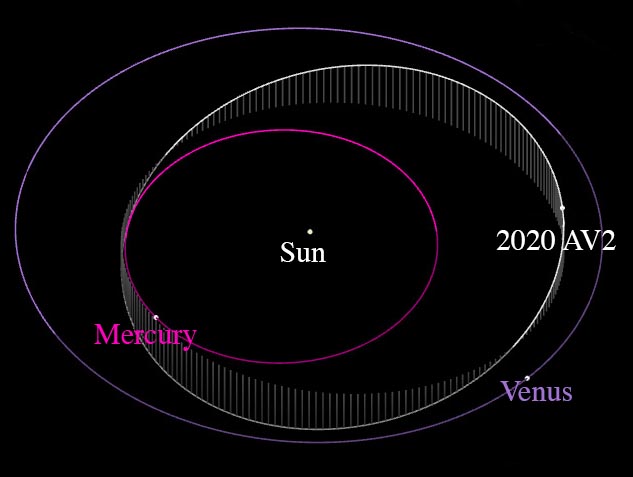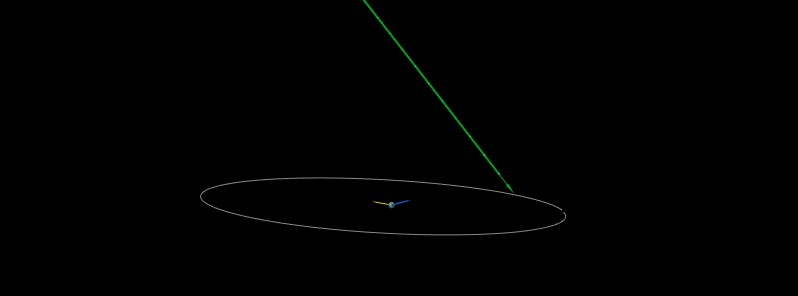16 Apr 2020 in Research & Technology
On 4 January 2020, astronomers using the Zwicky Transient Facility at Palomar Observatory discovered a new
asteroid, 2020 AV2. So close is its orbit to the Sun that the observing window shut just 19 days later. Nevertheless, enough measurements were taken to indicate that
2020 AV2 spends the entirety of its 151.2-day, roughly circular orbit inside the orbit of Venus. At
0.6538 ± 0.0001 AU, its aphelion (farthest distance from the Sun) is the smallest ever determined for an asteroid.
The orbit of 2020 AV2 is known with sufficient accuracy that two independent teams could infer the object’s dynamical past and future. Their newly published analyses agree that 2020 AV2 is close to an orbital resonance with Venus. If other asteroids occupy similar orbits,
they could constitute a large and stable population that awaits discovery.
One team consists of the brothers
Carlos de la Fuente Marcos and
Raúl de la Fuente Marcos, both of Complutense University of Madrid in Spain. The other is Sarah Greenstreet of the
B612 Asteroid Institute and the University of Washington in Seattle. Each used a different, complementary approach to tackle the sensitivity to perturbations of satellites in many-body, self-gravitating systems. The de la Fuentes calculated orbits for the central set of observationally derived orbital parameters and for three pairs of increasingly outlying sets of parameters. Greenstreet also calculated an orbit for the central set of observationally derived parameters as well as for 9900 sets of parameters assigned from a Gaussian distribution within the observed uncertainties.
Asteroid 2020 AV2 likely originated in the main asteroid belt between Mars and Jupiter. A type of orbital resonance,
ν6, made the orbit of 2020 AV2 ever more eccentric until the asteroid experienced close encounters with Earth, Venus, and Mercury. Despite the drastic changes in trajectory wrought by close encounters, both analyses indicate that 2020 AV2 appears to be in or close to the 3:2 orbital resonance with Venus. The stability of the resonance could safeguard the asteroid’s orbit from further close encounters with Venus. An additional source of stability, the analyses suggest, could come from correlated oscillations in inclination and eccentricity known as
von Zeipel-Lidov-Kozai oscillations.
Asteroids whose orbits lie within Earth’s are known as Atiras, after the Earth goddess of Pawnee mythology. Twenty-one Atiras have been discovered since the first one, (163693) Atira, was confirmed in 2003. Prefixing V for Venus yields Vatira, which is what astronomers unofficially call 2020 AV2.
Detecting other Vatiras is challenging because of their proximity to the Sun. Few ground-based telescopes can point low enough in the early morning or late evening to observe them. The de la Fuentes’ and Greenstreet’s analyses suggest the search for a new and possibly large population of Sun-orbiting objects could pay off. (C. de la Fuente Marcos, R. de la Fuente Marcos,
Mon. Not. R. Astron. Soc. 494, L6, 2020; S. Greenstreet,
Mon. Not. R. Astron. Soc. 493, L129, 2020; thumbnail illustration credit: NASA/JPL.)
